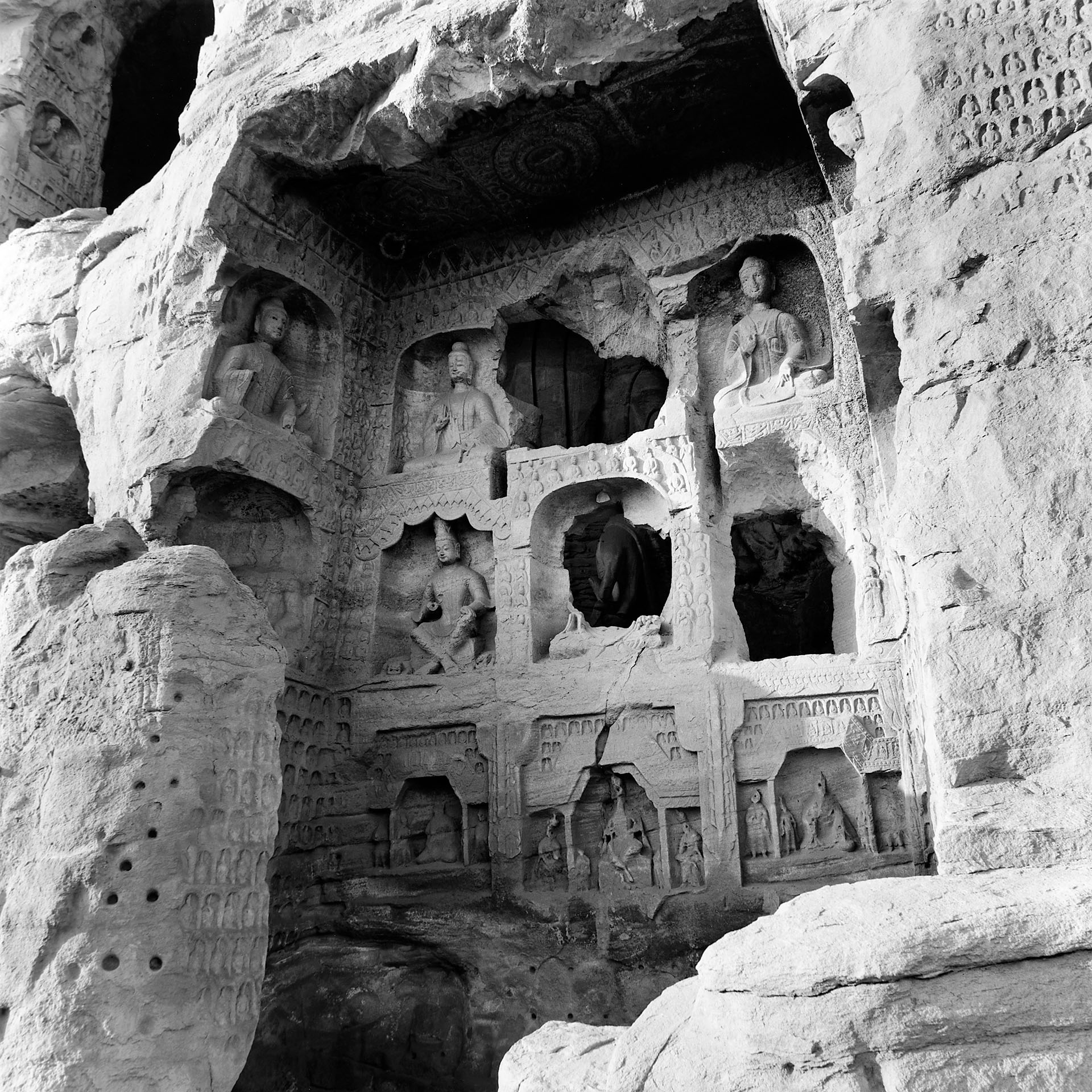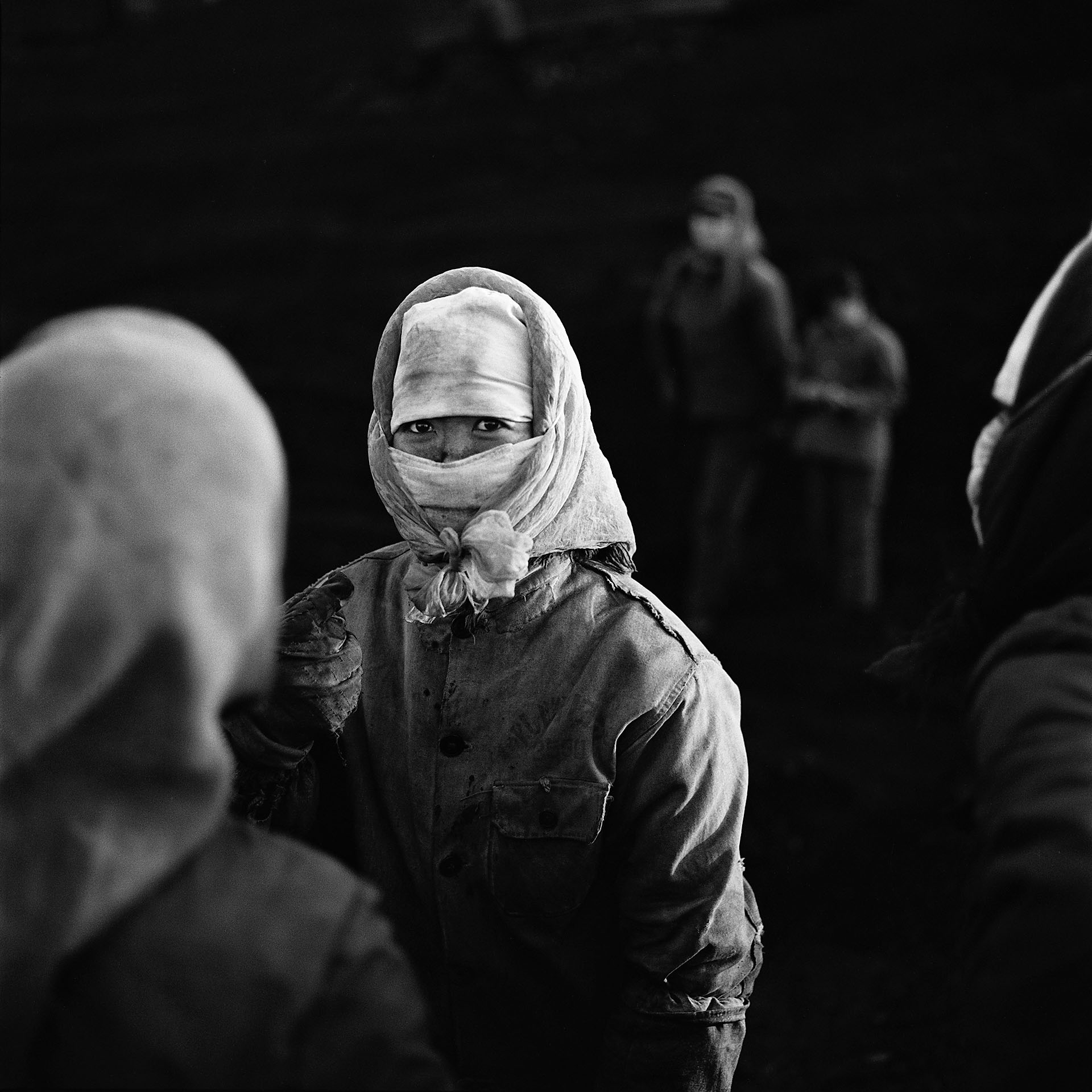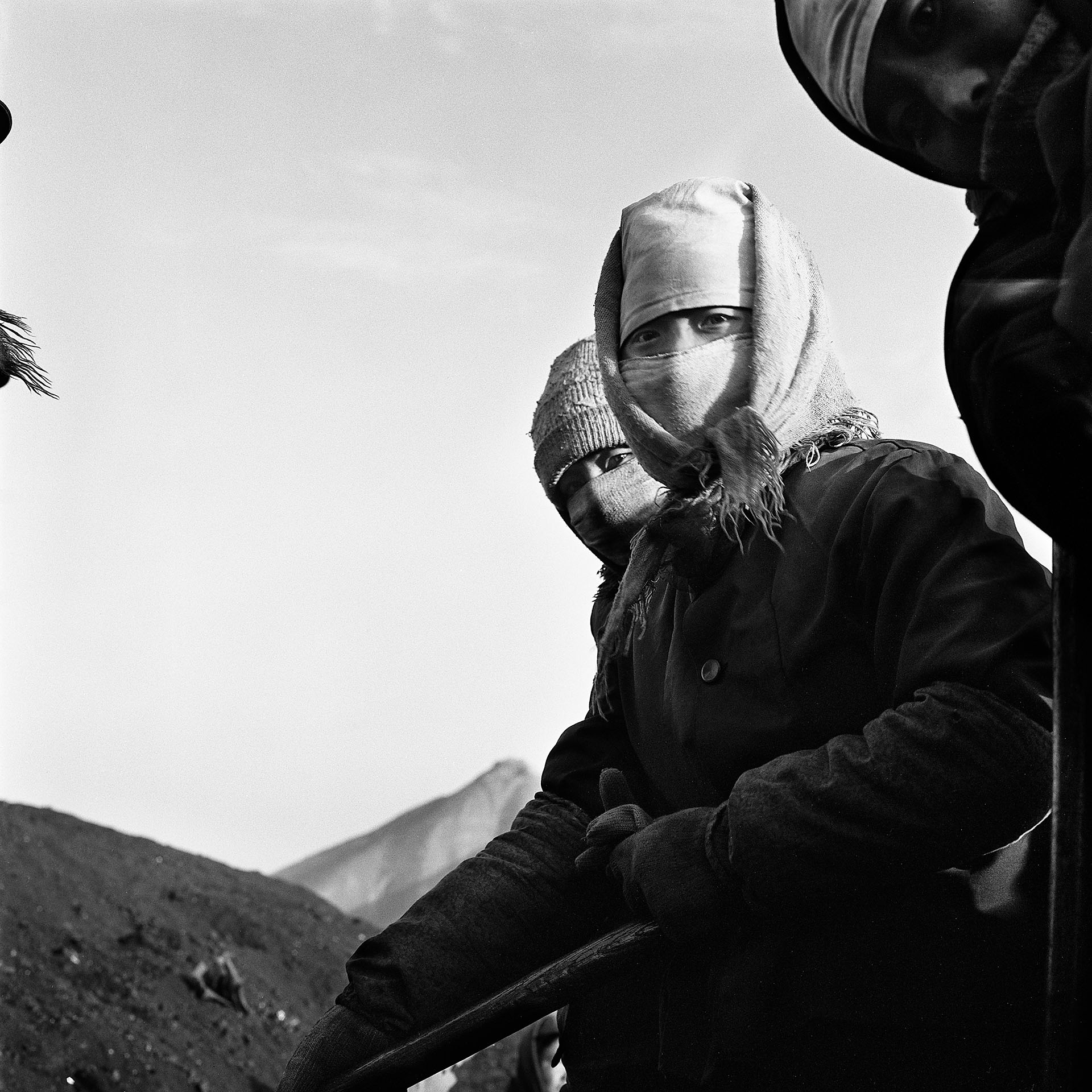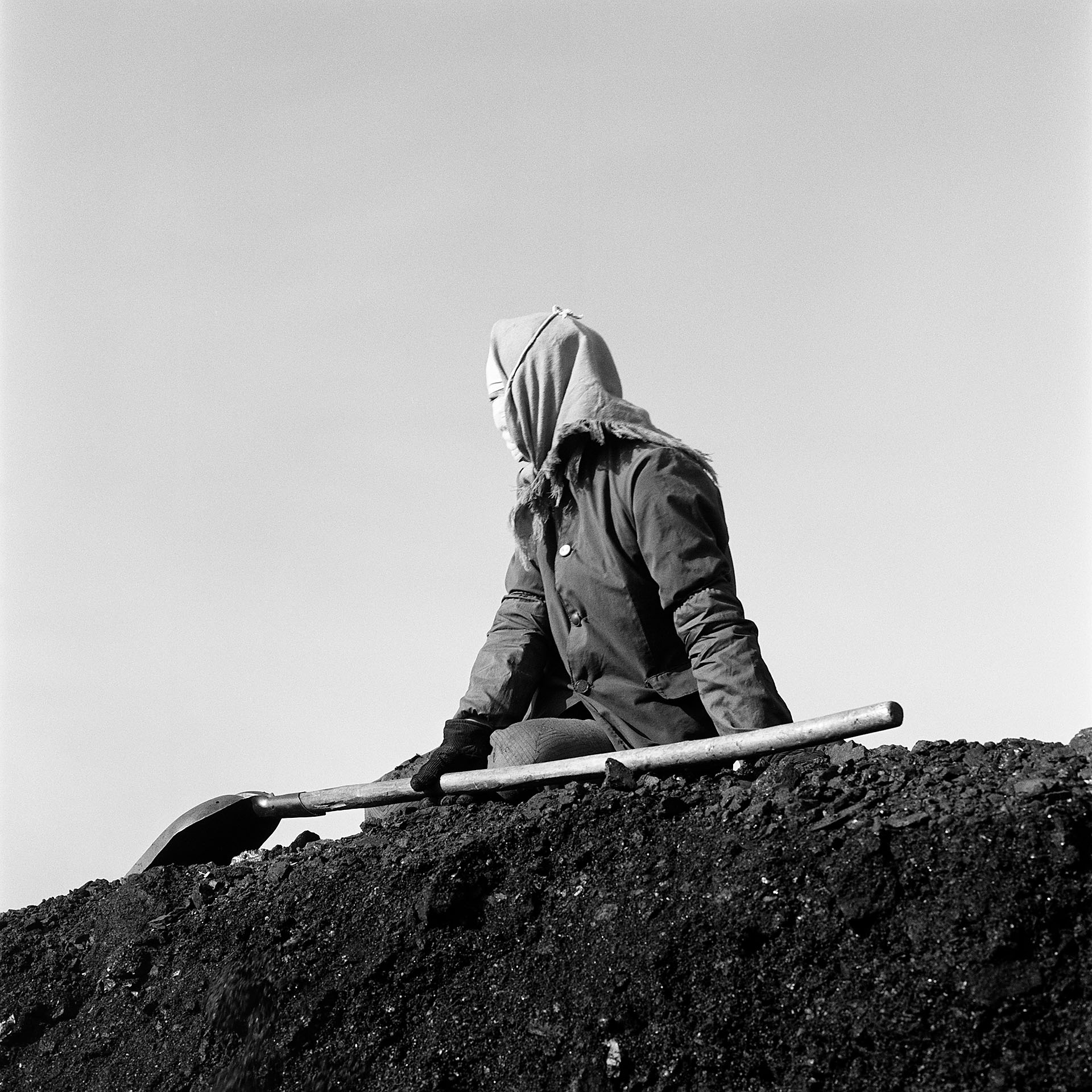1987
China – Undermining Buddha
My finest hour en route to the Great Wall was in Datong. Coal has been the backbone of the northern province of Shanxi, of which Datong is the capital, since the 1940s and there provides a livelihood for millions of miners. The mines of Yungang on the western outskirts of Datong are China’s biggest producer of coal and contribute heavily to the country’s carbon emissions, which are likely to continue rising for several decades yet before they go into decline.
Across the Shi Li River are the Yungang caves, one of the world’s greatest treasure houses of ancient stone carving, possibly inspired by the colossal Bamian Buddhas in Afghanistan. The 252 niches and caves and 51,000 statues, some as much as 17 meters tall, were carved in sandstone in the 5th and 6th centuries under the auspices of the Northern Wei and attest to the successful fusion of Buddhist symbolic art from South and Central Asia with Chinese cultural traditions. Storms from the Gobi Desert are expediting the statues’ decay and eroding the cliffs. But the biggest threat to the preservation of the ancient statues are the mines. Nearly all the airborne matter blowing into the Buddha’s face is either mineral dust or carbon particles. So tight are the scarves wrapped around the heads of the women working the loading stations that only the narrowest slit remains through which they can gaze – and smile – at the foreigner.
En Route
- 1987–the presentEntanglements
- 1977–the presentFaces
- 1991Iran – Kurdish Exodus
- 1990Georgia – Journey Through the End of an Era
- 1989Istanbul – Tanneries
- 1987China – Between the Walls
- 1987China – Undermining Buddha
- 1986Prague – Sentimental Journey
- 1986Egypt – Small Tour
- 1986–2010Zurich – Brief Encounters
- 1982–1986Silhouettes and Accessories
- 1977–1980Formation
- 1972–1976First Exposures













